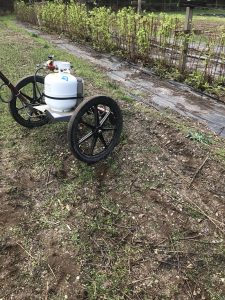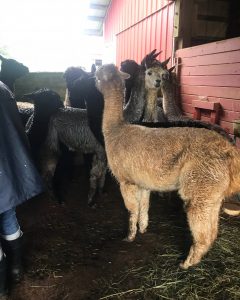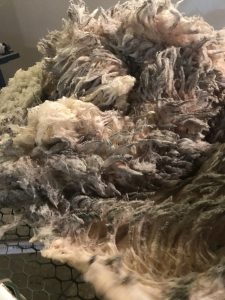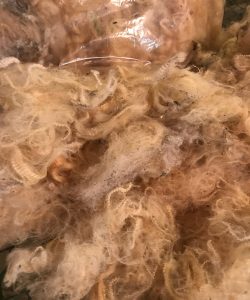This week my goal was to get the seeds for my fiber flax into the ground in order to be able to harvest them come July. So, I started the week by taking advantage of the break in rain to prep the bed for seeding. I received 1lb of ‘agatha’ flax seeds from Fibrevolution in Oregon, which covers one 10’x10′. I wanted to be sure that I had extra seeds just in case I run into germination problems with my first try, so I decided to use a 5’x10′ plot for my project – this only requires half of the bag of seeds that I have.

The bed that I chose is in full sun and was pretty full of weeds when I started, so I opted to flame weed. I know that once the flax begins to grow, it will crowd out all the weeds so I am not too worried about them further down the road. Looking back, it would have been more efficient to simply tarp the bed to eradicate weeds and would have used less resources from a sustainability perspective, but unfortunately I needed to get the seeds in the ground as soon as possible so I did not have the time to do so. The ground was a little wet which compromised the flame weeding a bit, so afterwards I went over the bed and hand weeded the tougher ones.

After weeding, I went over the bed with a rake to create indents in the soil in order to allow the seeds to better germinate. I weighed out 0.5lb of the flax seed and broadcasted the seeds evenly over the 5’x10′ bed and then used the back of the rake to cover the seeds. The seeds should take about 10 days to germinate and will be ready for harvest in 90 – 100 days.
I had originally planned to irrigate 1″ per week during germination, but we have received quite a lot of rain lately and are expecting more, so I made the decision not to irrigate at all. A great benefit to the sustainability of flax is the fact that (especially in the PNW) it requires very little water to thrive, so I am going to test that by not irrigating at all during its growth.


